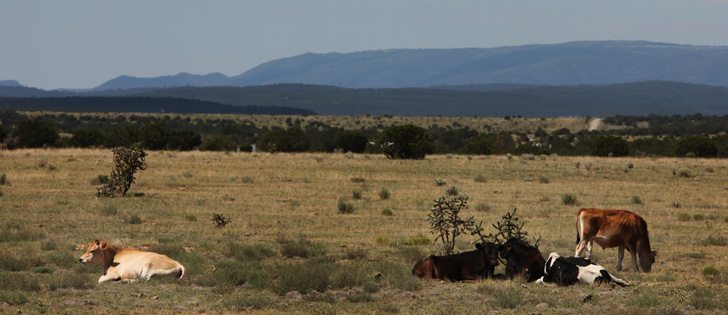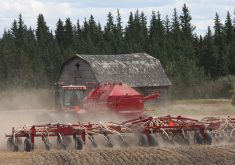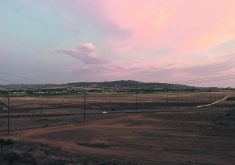The U.S. drought might have a silver lining for Canadian cattle producers.
The Prairies are likely to harvest bumper crops this fall, and some producers are looking south to buy U.S. feeder cattle or offer to place American cows on pasture rather than see them sent them to kill plants.
National Cattlemen’s Beef Association president J.D. Alexander said the idea might work if Canadians can afford to do it.
“It is an open market and it will depend on the industry and who might want to retain ownership,” he said.
Read Also

Lending policy still focused on primary producers: Farm Credit Canada
Farm Credit Canada said it has not changed its business practices and remains committed to supporting all producers, after a report from an Ottawa-based media outlet claimed otherwise.
Canadian Cattlemen’s Association president Martin Unrau said there has been informal discussion about importing feeders and breeding stock. Rules are in place to import American cattle, but few have come in since 2003.
“We are looking at importing feeder cattle from the U.S. because we think we will have the advantage in cost of gain,” he said in an interview.
“We are looking at how we could manage that and do it easily.”
Montana cattle often go to Nebraska for feeding, but it may be an advantage to send them to Alberta because it is closer.
Custom pasturing for cows in an emergency is another possibility.
“Unless we find a way to get them to some kind of grass, they will just be sent to kill,” he said. “We are not saying there are going to be hordes of cattle coming in, but we want to make sure there are opportunities for the Canadian feedlots if they have a feeding advantage to source those cattle.”
Competition for feeder calves this fall will be intense because there are fewer available and there is excess capacity in U.S. and Canadian feedlots.
Some feed is starting to move south, such as recent shipments of Manitoba winter feed wheat to Texas. The cost of feed is rising on both sides of the border, said Unrau.
“Feed that was $50 a tonne is now trading at $85 to $90 a tonne,” he said.
Manitoba and Ontario are also dry and may be a bit short of feed themselves.
In Unrau’s area, calves are being weaned earlier than normal because there is not enough grass in southeastern Manitoba. These would normally be sold in late October or November.
The pressures of high priced feed and calves are forcing new management approaches, but most agree it is important to maintain infrastructure for North American feedlots and processors.
The closure of feedlots could affect future growth in Canada if expansion ever starts.
Most thought this would be the year to grow, but more agree these weather conditions have delayed plans until 2014 or beyond, said Unrau.
“We need to grow in Canada. I think we need to be at six million cows.”
The drought in the United States has become serious for many producers.
Alexander had one-quarter of a millimetre of rain at his northeastern Nebraska feedlot in July.
“The last measurable rain was in May,” he said.
As well, his state received almost no snow last winter, which meant the spring was dry. Now, the third generation feedlot owner and rancher is making plans on a daily basis to stay in business.
“We don’t want to continue losing $200 per head,” he said.
Alexander said he understands the hardship many members are going through.
His region usually averages 635 mm of precipitation per year. Old-timers claim this is the worst situation they have seen in 50 years, while others say it is as bad as 1934 or 1988.
Besides the lack of rain, record-breaking heat waves have withered crops and livestock.
Cattle cannot stand too much heat so feedlots have added more shade and sprinklers to provide relief.
He grows some of the feed required in his finishing lot, but this year widespread failure of the corn crop has everyone worried.
Some have already started silaging corn because the cobs did not form or only had a few shriveled kernels.
Corn is trading at around $8 per bushel and hay has doubled in price. He calculates his cost of gain is $1.25 a pound, which is about the same price offered for a finished steer.
The NCBA wants a new farm bill to replace the old one, which expires Sept. 20. A new bill would provide producers with more certainty, but Congress is on vacation so little work has been done.
Farm groups have asked government to remove ethanol subsidies for a year to make more corn available for feed, but Alexander said that has fallen on deaf ears.
Some emergency provisions have been made that allow producers to take hay from municipal ditches and open up conservation reserve land for forage.
Alexander said recovery may not be too difficult if this is a one year drought, but it still slows expansion of the herd.















